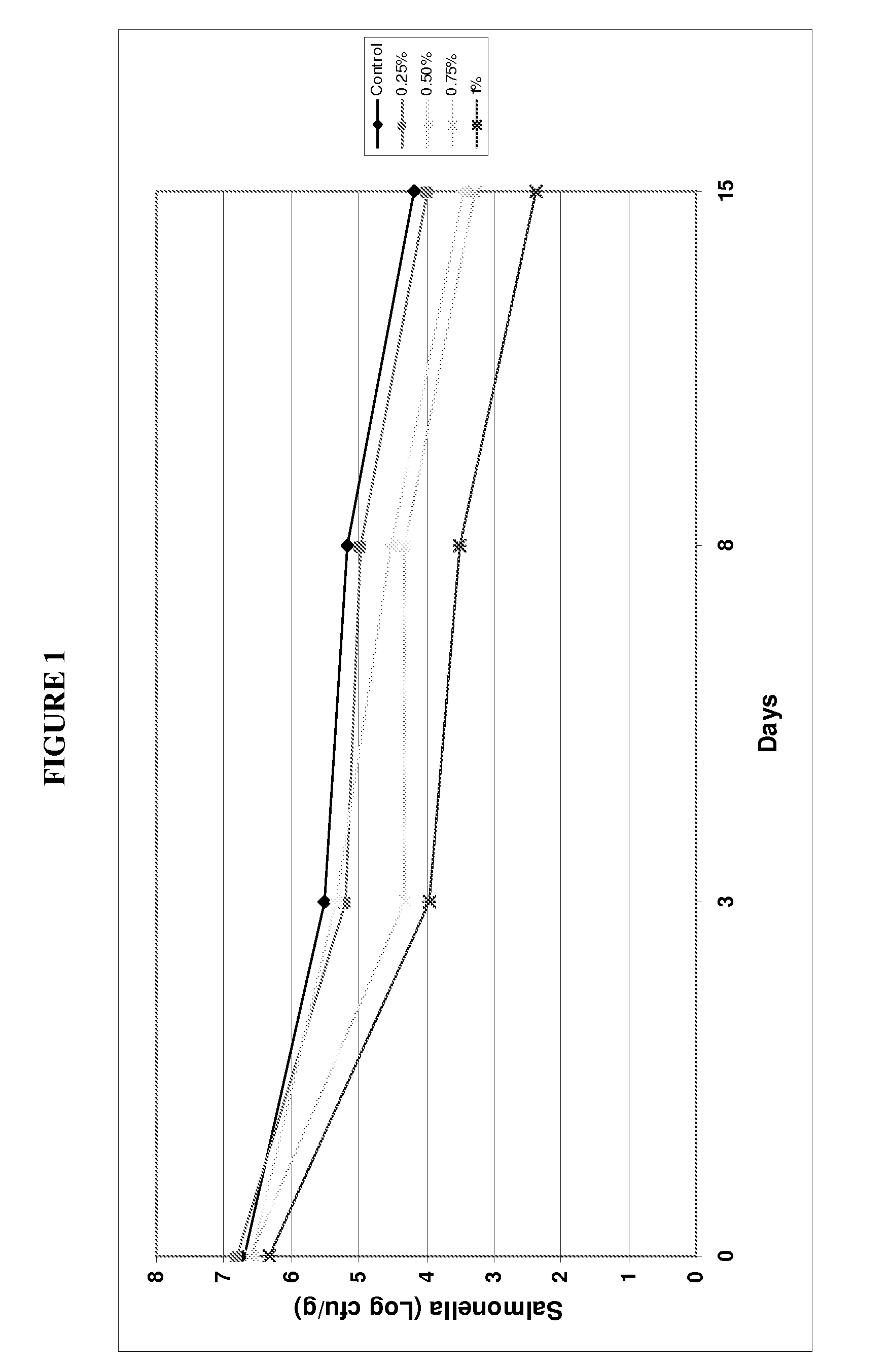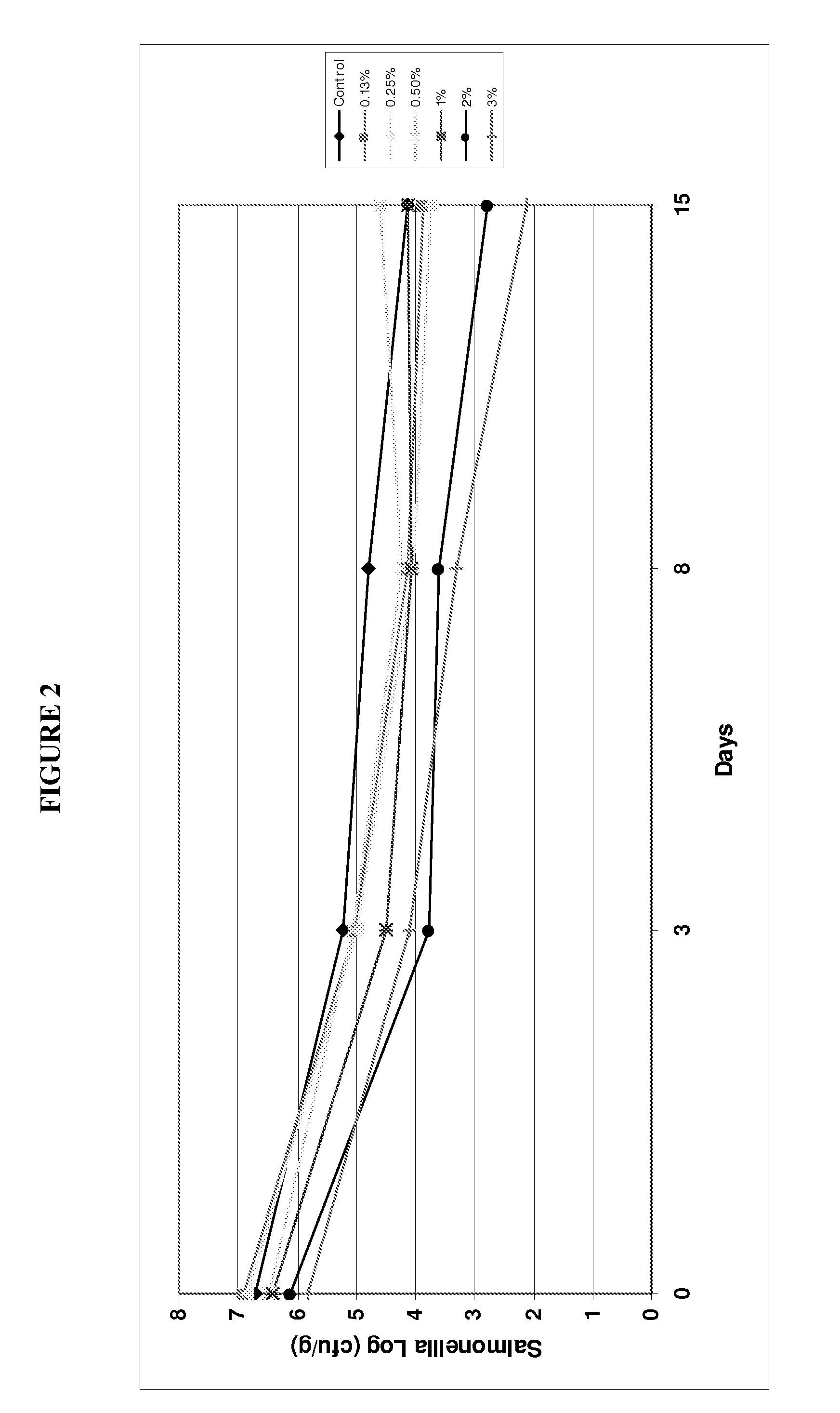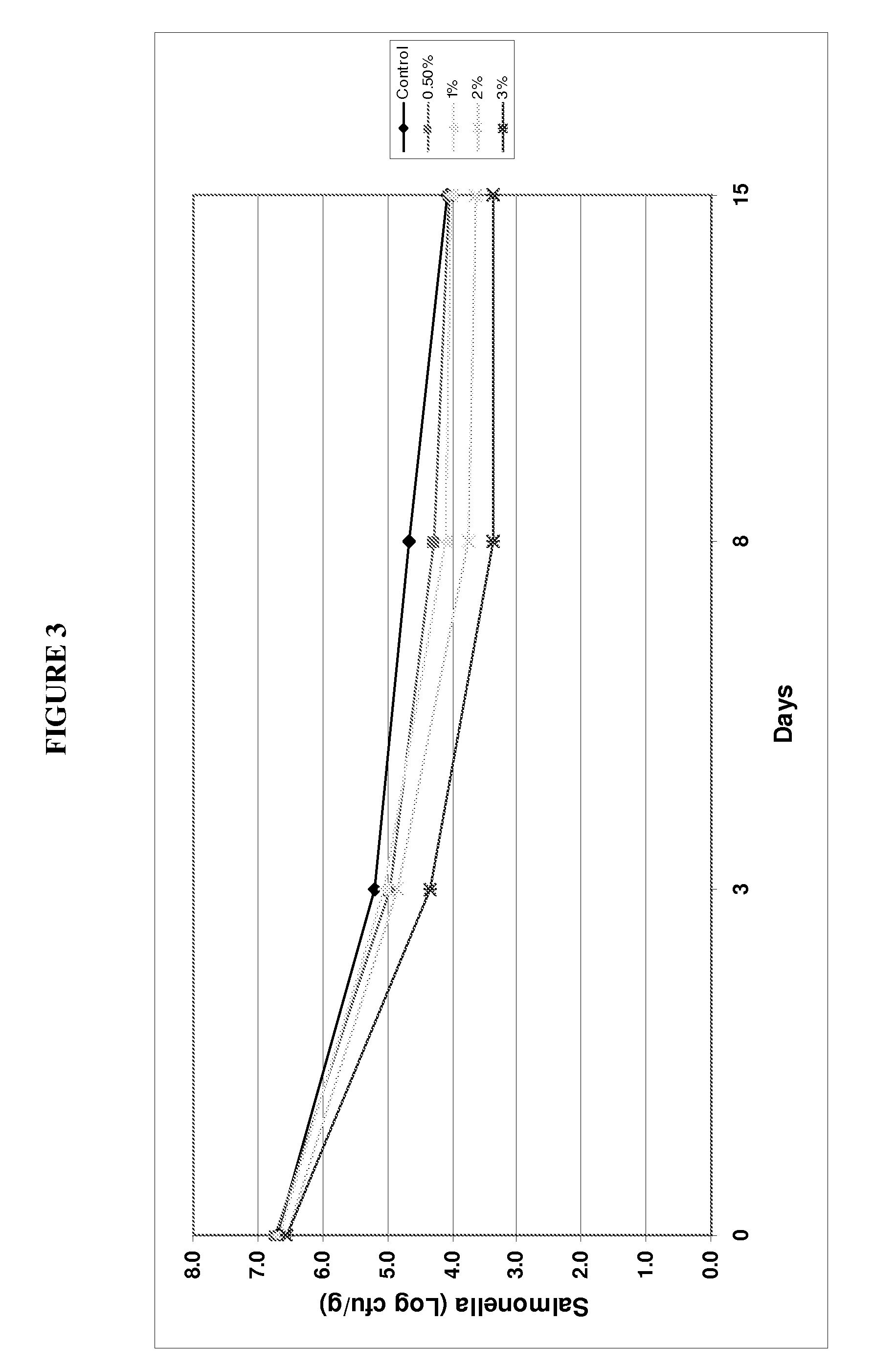Pet Food Compositions Having Antimicrobial Activity
a technology of antimicrobial activity and pet food, which is applied in the field of new food compositions, can solve the problems of finding effective antimicrobial agents, pet food compositions and food compositions, particularly dried pet food compositions, are susceptible to microbial contamination
- Summary
- Abstract
- Description
- Claims
- Application Information
AI Technical Summary
Benefits of technology
Problems solved by technology
Method used
Image
Examples
example 1
Disc Diffusion Test
[0093]This test is typically used for antibiotic sensitivity in bacteria and was adapted to measure Salmonella growth suppression by ingredients with potential antimicrobial (AMI) activity. Discs of filter paper, approximately 5 mm in diameter, were soaked in an AMI at 1%, 2%, and 3%, except for oregano, which was soaked at 0.1%, 0.2% and 0.4% solution and placed on a Petri dish with standard methods agar with tetraphenyltetrazolium (TTC) that has been smeared with a standardized suspension of Salmonella (S. aarhus, S. muenster El &S. worthington). Efficacy of the AMI was validated by measuring how closely the Salmonella cultures grew with respect to the saturated filter paper.
[0094]Ingredients were screened for antimicrobial activity using the Disc Diffusion Test. Solutions of 1%, 2%, and 3% were prepared for each of these ingredients, except for oregano, which was prepared at 0.1%, 0.2%, and 0.4%. Soaking of the disks, placing them on a Standard Methods agar pla...
example 2
Kibble Diffusion Test
[0096]The kibble diffusion test has similar principles as the disk diffusion method. Whole kibbles (finished product) coated with different levels of AMI (1%, 2%, and 3%, except for oregano 0.1%, 0.2%, and 0.4%) were used instead of the disks. Kibbles were placed on a Petri dish with standard methods agar with TTC that has been smeared with a standardized suspension of Salmonella (S. aarhus, S. muenster El &S. worthington). Efficacy of the AMI was validated by measuring how closely the Salmonella cultures grew with respect to the saturated kibbles.
[0097]Commercial canine and feline adult pet food compositions in the form of kibbles were coated with potential AMIs. Kibbles were placed on top of Standard Methods Agar with TTC already smeared with Salmonella (S. aarhus, S. muenster El and S. worthington). After incubation overnight at 30° C., plates were analyzed for presence of clear zones around the kibbles.
[0098]Propionic acid, phosphoric acid, lactic acid, phen...
example 3
MIC (Minimum Inhibitory Concentration)
[0099]The minimum inhibitory concentration (MIC) of an antimicrobial ingredient is defined as the maximum dilution of the product that will still inhibit the growth of Salmonella. Serial dilutions (0-3%, except for oregano 0-0.3%) were made of the AMI in bacterial growth media and poured in test tubes. The test organisms (S. aarhus, S. muenster El and S. worthington) were then added to the dilutions of the AMI ingredients to a final concentration of 106 or 103 cfu / g, incubated overnight at 30° C., and scored for growth by turbidity or plate counts.
[0100]Minimum Inhibitory Concentration was conducted for 103 and 106 cfu / g Salmonella. Results reported as negative sign means inhibition, while positive sign denotes growth. Oregano needed a MIC of 0.15% to inhibit Salmonella, whereas, at least 0.9% was needed for phenol-pH 4.25-4.85, phenol-pH 2-2.5, phenol 2-2.5, Phosphoric acid, Lactic acid, Propionic Acid, Calcium propionate / zinc propionate, and s...
PUM
| Property | Measurement | Unit |
|---|---|---|
| Fraction | aaaaa | aaaaa |
| Fraction | aaaaa | aaaaa |
| Fraction | aaaaa | aaaaa |
Abstract
Description
Claims
Application Information
 Login to View More
Login to View More - R&D
- Intellectual Property
- Life Sciences
- Materials
- Tech Scout
- Unparalleled Data Quality
- Higher Quality Content
- 60% Fewer Hallucinations
Browse by: Latest US Patents, China's latest patents, Technical Efficacy Thesaurus, Application Domain, Technology Topic, Popular Technical Reports.
© 2025 PatSnap. All rights reserved.Legal|Privacy policy|Modern Slavery Act Transparency Statement|Sitemap|About US| Contact US: help@patsnap.com



